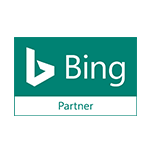Using Social Media As a Recruitment Tool: Pros & Cons

Source: Pexels
Social media has become an effective tool for both recruiters and job seekers. According to a 2021 survey by Jobvite, 94% of recruiters and hiring managers use or plan on using social media in their recruiting efforts.
This article explores the pros and cons of using social media as a recruitment tool and how to do so effectively.
Pros of Social Media Recruitment
When it comes to using social media to find qualified candidates for a job posting, the pros outweigh the cons. Some of the key benefits include:
Wide Reach
Posting jobs on social media offers the benefit of casting a wide net. Shareability helps job posts work with the algorithm to show up on more social feeds, improving the potential of attracting the right candidate. This aspect also goes well with employee ambassador efforts when a structure around post-sharing etiquette is in place (i.e., asking your employees to share the post with their network).
Another benefit of social media job postings is their potential to land in front of a qualified candidate who may not be actively seeking a new role. It’s not uncommon for talented individuals with no plans of a job change to apply to a position with a brand they support.
This aspect of social media recruiting is also beneficial in a post-pandemic world, as geography no longer has the same influence on hiring practices. A 2021 survey by PwC found that 58% of US companies planned to continue offering remote work options in the post-pandemic environment. Social media sharing helps recruiters attract top talent from around the world without the worry of relocation fees or missed opportunities.
Cost Effective
Social media recruiting is also more cost-effective than other methods. Basic social media posts are low-cost or free to post. Boosted or sponsored posts are still considered more affordable than other options, like job boards. As the recruiter has more control over the spending (daily set budgets rather than flat rates), they can budget more effectively.
As mentioned above, social media also promotes a wider reach when sharing job postings. This directly impacts the budget by requiring fewer resources to publish and circulate a job posting and indirectly impacts the budget through opportunity cost. For example, without social media, a recruiter may have to explore several channels and coordinate communications through various tools, requiring more valuable time dedicated to the task. Automation is also a significant part of social media scheduling and capturing metrics, contributing to time savings as well.
Finally, advanced targeting on social media helps narrow the focus and reach those who are most likely to be qualified or respond to a job post. This factor also impacts the opportunity cost and ensures the resources are being applied in the best possible manner.
Rapport Building
One of the downsides of recruiting and hiring in a pre-social media world was the lack of interaction or rapport-building opportunities. Now, recruiters and candidates can communicate in real-time and build a human connection.
As social media is also a powerful branding tool, it can be used to find people who feel aligned with the brand’s values and positioning. Recruiters have an opportunity to look at how the candidate interacts with the brand to determine their overall fit.
Pre-screening
Social media is also a fantastic way to get more insights into a candidate before reaching out to schedule an interview. While crafting a well-worded resume and including key performance indicators on a resume might attract a hiring manager’s attention, social media could be the gateway to getting an interview.
It’s estimated that 70% of recruiters use social media in the hiring process, with 54% of them saying they’ve found information that caused them not to hire a candidate. The most common things that employers and recruiters flag on job candidates’ social media profiles are unprofessional content (such as offensive language, drug use, or discrimination), poor communication skills, and discrepancies between the candidate’s resume and social media presence.
Recruiters can use social media as a pre-screening tool to help reduce turnover and protect the integrity of the brand.
Cons of Social Media Recruitment
While social media offers several benefits for recruiters, it’s not without its disadvantages. Some of the overarching challenges with social media recruiting include:
Noise
It’s estimated that two million posts are published on LinkedIn every day. While sharing and employee ambassadorship can help extend the reach of job listings, there’s a lot of noise to cut through in the social media realm. This constant chatter could limit the post from getting to the right person — especially if the recruiter relies solely on social media.
Casting a wider net also means dealing with more unqualified applicants. While automation can help with the pre-screening process, recruiters and hiring managers may have hundreds or even thousands of applications to sort through for a single job post. This factor can also make social media recruiting more time-consuming, as social media marketing is already time-heavy.
Legalities
It’s easy to cross lines and use hiring practices that could be called into question legally. Using certain metrics could lead to bias in hiring, going against anti-discrimination and equal opportunity laws.
It’s also important to understand the rules surrounding social media pre-screening. In most areas, it’s illegal to require a candidate to give you access to their social media or accept a friend request. If the candidate keeps their social profiles private, you can’t request access as a contingency in hiring.
Lack of Context
Another issue with social media recruiting is the lack of context provided on social media posts. Seeing someone’s memory of a party from their early 20s doesn’t necessarily impact their work habits today. Similarly, as social media can be so planned and curated, the images showcased could provide a false sense of security.
What Platforms are Best for Recruiters?
LinkedIn is the obvious choice when using a social media platform to attract talent, followed by Facebook and Twitter.
While LinkedIn is an excellent way to actively recruit and seek out individuals with work backgrounds relevant to the job, it’s typically only used by people actively developing their careers. Facebook and Twitter increase the reach to people who are passively looking for employment.
How Can Recruiters Engage Passive Candidates?
Passive candidates in social media recruiting refer to individuals who are not actively seeking a job. These candidates may be employed and satisfied with their current role but are open to considering other positions that may offer better opportunities, benefits, or career growth. Educators are great examples of this. They are often passively looking for another role, especially remote jobs that are teacher-related.
Recruiters can reach passive candidates by participating in groups and communities, sharing relevant content, and starting conversations. The LinkedIn Recruiter tool can also be used to source potential candidates who aren’t listed as searching for a job but have the right qualifications and experience.
Tips for Using Social Media as a Recruiting Tool
Social media recruiting is, in essence, a form of social media marketing. It requires a strategic approach to be effective. Here are some of the top tips for using social media as a recruiting tool:
Identify Your Audience
Set clear goals and metrics around your ideal candidate. This will act as the framework for your targeting efforts and help you find the best fit for your company.
Create Branded Collateral
Each post should be on brand, featuring copy and graphics that suit the overall look and voice of the company. This is an excellent opportunity to convey the brand values and company culture. Professionalism in tone and design is essential.
Be Engaging
Don’t just set it and forget it when posting a job online. Have a designated person online to respond to comments and direct messages several times per day. Have a clear call-to-action for anyone who requires further information to streamline communication efforts.
Optimize Your Landing Page
Social media job posts typically lead to the job posting page. Optimize this landing page to convey relevant information about the company as a one-stop shop for applicants.
Encourage Employee Sharing
Remind employees to share the job posting with their networks and anyone who may fit the description. Many job applicants (and customers) assess employee satisfaction when determining how they’ll interact with a brand. Happy, engaged employees who are happy to share job posts and positive captions will help attract top talent.
Use Insights
Take the time to review data from your social media insights to determine the effectiveness of your campaign. Some key performance metrics to watch include:
- Reach
- Engagement
- Click-through rate (CTR)
- Application rate
- Time to fill
- Cost per hire
Use these metrics to determine posting times, develop new strategies, and reshape future hiring campaigns.
Stay Ahead of Trends
Stay ahead of social media trends to ensure you’re following modern best practices and showcasing your brand in the best possible light. Trends are also an effective way to extend your reach and discover aligned candidates.
Final Thoughts
Social media can be a great tool for recruiting talented employees to your brand, as long as you’re aware of the cons and put plans in place to avoid them. Create an effective strategy, learn from analytics, and capitalize on this amazing hiring tool.




